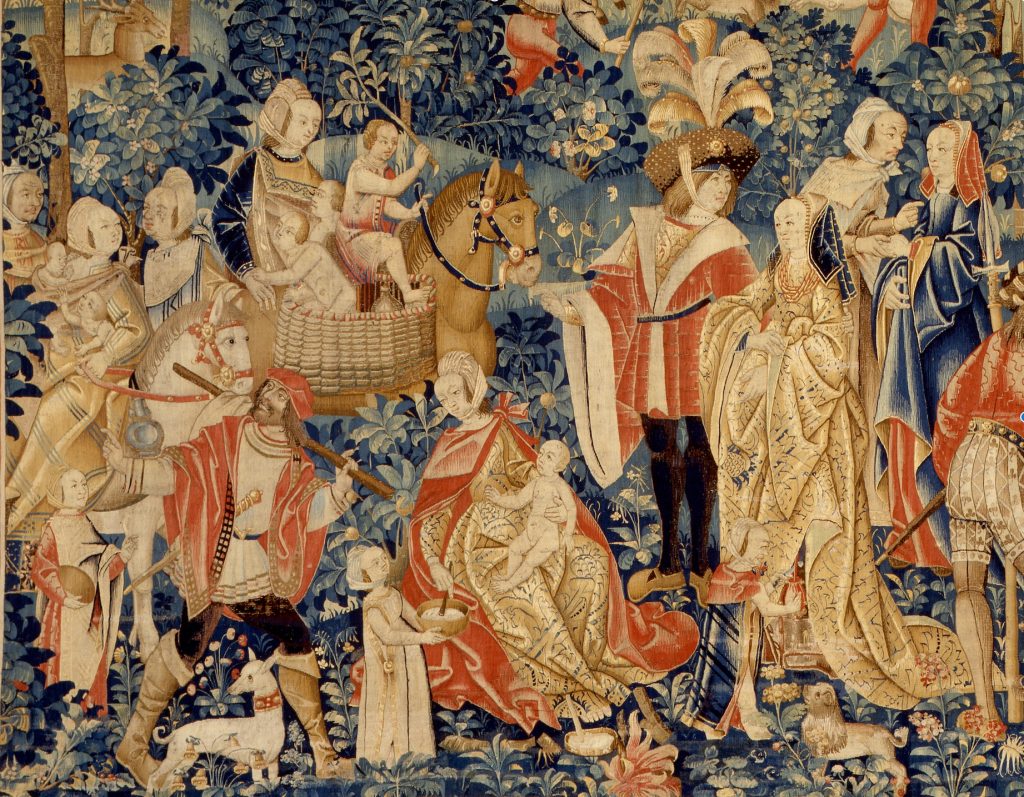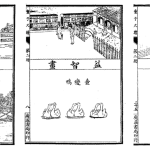On this sixteenth-century tapestry, two worlds collide. Woven in Flanders (modern-day Belgium), this masterpiece of Gothic tapestry once adorned the walls of the d’Effiat palace in Claremont-Ferrand, France. In 1937, the tapestry reached its current home, the Currier Museum of Art in Manchester, New Hampshire. For its original owners, this tapestry would have provided insulation, a splash of color, and entertainment. Tapestries told stories. In the upper left, hunters chase a stag; in the lower right, lavishly dressed aristocrats inspect the spoils of the hunt. In the lower left, a very different group makes a dramatic entrance: a traveling band of Romani men, women, and children.
The Roma, a diasporic people with ancestry in northern India, first immigrated into western Europe in the early fifteenth century. Late medieval Europeans described this newly-arrived people as foreign-born lords in exile, Christian penitents, and itinerant diviners. By the turn of the sixteenth century, however, these more neutral attitudes toward the Roma were giving way to new stereotypes. The Roma, henceforth branded by outsiders as “Gypsies,” have fought ever since against hostility and state violence.

The makers of this tapestry – who were not Romani – chose to feature Romani children front and center. What stories do these imagined children tell? On the far left, a Romani mother is carrying two infants on horseback. Just ahead, another mounted Romani woman wrangles a gaggle of three rambunctious toddlers. In contrast to the nobles emerging from their palace on the right, these Romani children paint a striking picture of domestic life lived entirely on the road. Children were more than just burdens, however. In the lower left corner, a young Romani girl assists an adult man by carrying a small parcel. Another girl presents a bowl of porridge to a woman feeding her baby. These children show themselves to be capable members of their itinerant community. More easily missed is the final Romani child at the center of the tapestry, who is stealing the purse of a clueless noblewoman. By depicting the Roma – especially Romani childen – as thieves, the tapestry reinforces an antiziganist stereotype that is unfortunately all too familiar.
Through these nine imaginary children, the weavers of this tapestry portrayed the Roma as itinerant and resourceful, but also dangerous. The tapestry thereby captures the spirit that prevailed at the end of the Roma’s medieval “golden age,” when the Roma served as ambiguous objects of western Europeans’ curiosity, admiration, and prejudice. To understand the Roma and their future, this tapestry suggests, one needed only to observe their children.
Lane B. Baker (he/him) is a PhD Candidate in History at Stanford University. He studies tolerance, marginalization, and minority communities in late medieval Europe. At the moment, he is in the final stages of his dissertation on the fifteenth-century immigration of the Roma into the German-speaking world. You can reach him at laneb@stanford.edu.






